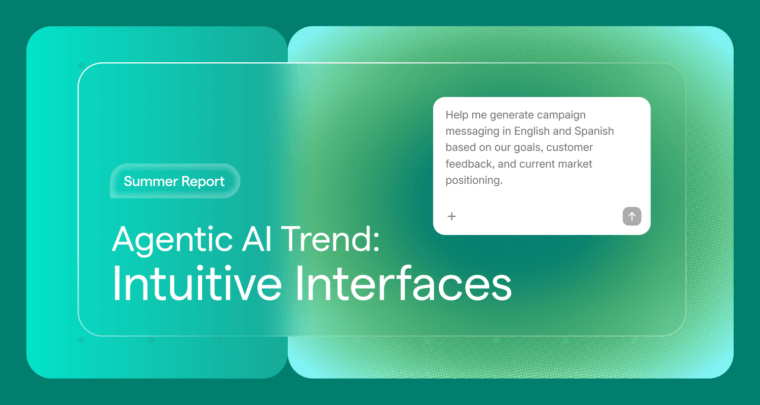
ChatGPT has become quite popular, but many people find it challenging to maximize its usefulness. The secret to getting the best results lies in the prompts you use. By learning how to craft effective prompts, you can help ChatGPT produce more relevant and personalized responses to suit your needs.
In this article, we’ll explore what ChatGPT prompts are, the different types you can use, and proven strategies for crafting effective ChatGPT prompts that get results.
What is a ChatGPT prompt?
ChatGPT prompts are the questions or statements you use to guide the AI in generating responses. They act as instructions, helping ChatGPT understand your needs—whether you want an answer to a question, information on a topic, or engagement in a conversation. Clear and specific prompts lead to more accurate and relevant responses.
Typically, prompts are text-based, but with a paid subscription, you can also submit voice prompts. Additionally, a paid subscription allows you to upload files, such as images or spreadsheets, as part of your prompt.
Types of prompts ChatGPT supports
ChatGPT can accept many different kinds of prompts, from creative to conversational.
Here’s an overview of each type of prompt:
- Informational: Ask ChatGPT for facts and data, such as “What are the largest cities in each state in the United States?” or “What are some popular certifications for someone pursuing a career in project management?”
- Instructional: Instruct ChatGPT to perform a specific task, like summarizing a lengthy article, extracting data points from a report, or writing documentation for a code snippet.
- Creative: Request creative content from ChatGPT, such as a poem, character descriptions for a novel, a company tagline, or a social media post.
- Conversational: Engage in a dialogue with ChatGPT by starting with prompts like “I’m stressed about my presentation tomorrow. I could use some tips on public speaking.” You can continue the conversation back and forth to get the necessary information.
- Problem-solving: Present a problem and ask for solutions, for example, “How can I improve collaboration between employees working remotely?”
- Opinion-based: Seek opinions on complex situations or topics, like “What’s the best way to tell my manager that I’m interested in moving to another team?” or “Which emerging technologies will have the biggest impact on the world in 10 years?”
- Educational: Ask for help with academic questions, such as “What is an acid?” or “What was the Romanticism era in art history?”
Writing clear, concise prompts can be time-consuming. You have to consider the appropriate tone, style of writing, desired format, and expected audience. Depending on your use case, you may find other generative AI tools, like Grammarly, that suit your needs. Grammarly streamlines prompting by allowing you to customize your tone, formality, and professional relevance.
How to write prompts for ChatGPT
Crafting effective AI prompts requires that you include specific details about style, tone, and formatting. Good prompts also provide ChatGPT context on the project or task you’re working on. Use these techniques to write better prompts and guide ChatGPT more effectively.
Be specific with your prompts
Vague prompts result in generic outputs. Oftentimes, this is because the context required to generate the right response lives in your head, and the chatbot doesn’t know exactly what you want. To combat this, provide ChatGPT with enough details up front so it understands your specific circumstances and knows enough to meet your demands. This often calls for an iterative process: you go back and forth with ChatGPT and refine your prompts until it has enough context to generate a better response.
Here are a few examples of creating more specific prompts.
Instead of this:
Create a list of activities for young kids.
Do this:
Create a list of outdoor activities for six kids ages 5–8. The kids can access a large, flat yard, a kiddie pool, and a nature trail nearby.
Instead of this:
Write a marketing email for our window washing services.
Do this:
Write a marketing email for our company’s window washing services. The company’s brand voice is funny and irreverent. The email should highlight the company’s ten years of experience and the value of getting windows washed during spring. Include a clever call to action directing readers to reply to the email to get a free quote from Aly, the company’s owner.
Instead of this:
What are the biggest challenges for manufacturing companies?
Do this:
What are the five biggest challenges for manufacturing companies in the US and Mexico? I want to learn more about labor, sustainability, and regulatory issues.
Provide sufficient context in your prompts
In addition to being specific, providing relevant context in your prompts allows ChatGPT to understand them better and create more personalized responses. ChatGPT has a large context window, which means you can copy-paste information from websites, attach images or text documents, or even ask it to browse certain websites for you. It will use all that information as background to better understand your request.
Here are a couple of examples of how to provide better background in your prompts.
Instead of this:
Write an outline for a report on improving access to healthcare.
Do this:
I work for a nonprofit that helps improve access to healthcare in rural areas. I am working on a report that describes what we do and why it’s important. The report will be sent to the local government leaders I want to work with. You can visit our website at [example-site.com] for more context. Once you’ve done that, draft an outline of the report.
Instead of this:
Brainstorm themes for an urban mural.
Do this:
I am an artist submitting a proposal for a mural to be placed outside a recreation center in Panama City, Panama. To make it stand out, I want to provide some thematic ideas. Attached is some of my most recent creative work. Please brainstorm some ideas for this mural.
By leveraging ChatGPT’s context window, you can provide a richer background that allows it to grasp your specific needs and generate a more relevant, high-quality response tailored to your prompt.
Give ChatGPT a persona
While detailed prompts can yield tailored responses, sometimes ChatGPT needs an extra nudge. You can explicitly prompt it to role-play a specific persona to steer its outputs in your desired direction.
Here are examples of how to incorporate a persona in your prompts:
- You’re an HR manager in charge of employee communications. Please write an internal memo explaining that the company is moving offices at the end of the year.
- As a nonprofit PR consultant, suggest ways to improve these materials to better appeal to potential funders. [attach documents]
- You are an SEO expert. Please list the most popular long-tail keywords related to [topic].
Tell ChatGPT to emulate a particular style
You can shape the personality and tone of responses by asking ChatGPT to emulate a popular style, person, or brand. This is especially helpful if you have a certain voice in mind but are unsure how to describe it in a way the chatbot will understand.
Here’s how to ask ChatGPT to emulate a particular style:
- Create a 300-word description of our company in the style of a Wikipedia page. Use this collateral for details on the company’s history and services. [upload collateral]
- Explain the Pythagorean theorem in the playful style of Dr. Seuss.
- Write a 1930s newsreel-style radio ad promoting our clothing store.
Specify the format and length of the response
To get the most value from ChatGPT, it’s sometimes necessary to provide clear guidance on the format and length of the response. Many users overlook including these details in their prompts, which leads to responses that miss the mark.
These are ways to tell ChatGPT what response format you want.
Instead of this:
Write an agenda for a meeting with a group of new hires.
Do this:
Write an agenda for a 2-hour meeting with a group of new hires at company X. For each agenda item, include approximately how long it will take and the purpose of each activity.
Instead of this:
Summarize the attached report so the executive team can review the key takeaways.
Do this:
Summarize the attached report so the executive team can review the key takeaways. The summary should be no longer than 500 words long. Use bullets to highlight key data points. [attach report]
Instead of this:
Write a list of FAQs for a doggy daycare.
Do this:
Write a list of 12 FAQs for a doggy daycare website. Provide only the questions; we’ll add the answers later.
Write concise prompts
While providing details is important, you shouldn’t overload ChatGPT with unnecessary information. Providing irrelevant information can throw the chatbot off, and you may end up with an irrelevant or unfocused response.
These are ways to revise your prompts to be succinct.
Instead of this:
Write a landing page promoting our summer sale. We have sales four times per year, and we always advertise with our website, social media, and direct mail campaigns. This landing page will go live on June 20, and everything is 20 percent off July 1–4 for the sale.
Do this:
Write a landing page promoting our summer sale. Everything is 20 percent off July 1–4. We only have sales four times per year, so we want to highlight that.
Instead of this:
I’m building a website for a consulting firm. It’s a big firm specializing in many industries and has 32 offices. The website users will be people in the accounting and finance industry, typically titled Manager, Director, or Vice President. I wrote code for a tool that allows them to look up the names of consultants specializing in their industry, but it’s not working. Please find the errors in the code. [insert code]
Do this:
I wrote a snippet of code for a tool that helps users look up consultants in their industry. It’s not working. Please find the potential errors in the code. [insert code]
Instead of this:
What are some of the best ways to persuade busy executives to attend an event? We hosted three events last year, but attendance was low. We offered raffles because we had success with them a few years ago. After meeting with the team, we realized our marketing materials didn’t make the events sound worth their while.
Do this:
How can we get busy executives to attend our events? We have tried offering raffles, but that wasn’t successful. Please propose some other ideas to make our events more appealing.
Tell ChatGPT what you don’t want
If there are certain topics, words, or formats you want ChatGPT to avoid in its response, you should specify these instructions in your prompt. For example, you might want to exclude clichés, controversial topics, or political content from your response.
Here are a few examples to try:
- Create a mission statement for a new sustainable clothing brand targeted at Gen Z customers. Don’t use clichés like excessive emojis or claims to “save the planet.”
- Write a job post for a customer success manager. It should be eye-catching and show off our company’s fun personality. Don’t use words like “ninja” or “rock star.”
- Draft a 500-word blog post discussing the benefits and risks of AI in healthcare. Avoid using technical jargon and mentioning any scientific claims without references.
- List the biggest mysteries of the 19th century. Don’t use a bulleted list format.
Use ChatGPT’s conversational memory
As of May 2024, the paid version of ChatGPT has a memory feature that allows it to remember and reference details from previous conversations with you. This enables a more natural, contextual dialogue to unfold over time. (Be aware that paid ChatGPT doesn’t have unlimited memory, so it will eventually lose track of your previous exchanges.) To take full advantage of this:
- Ask follow-up questions to clarify or expand on previous responses.
- Reference and build upon contextual details from earlier discussions.
- Use prompts like “remember this…” or “adjust my current city…” to directly update the information stored in ChatGPT’s memory.
Through this back-and-forth process, you can guide ChatGPT to better grasp your needs and preferences. Users can ask follow-up questions or update ChatGPT’s memory with specific information like this:
- Earlier, you provided some tips for getting around Paris with kids. Is it manageable to take the metro from our accommodation to the Eiffel Tower with 8- and 12-year-old kids?
- Remember when I told you I wanted to eat more vegan meals? Can you suggest a few easy recipes I could cook that align with this theme?
- I told you a few months ago that I wanted to train for a marathon. Can you draft a beginner workout plan for this goal?
Effective follow-up techniques
Consider using follow-up questions to get the most out of your interactions with ChatGPT. This tactic allows you to push ChatGPT to defend its responses, ask for simpler explanations, or explore different perspectives.
Here are some follow-up questions to try:
After ChatGPT provides an answer to an informational prompt:
- Where can I learn more about [topic]?
- Who are some leading experts in this field?
- That was confusing. Can you explain it in simpler terms?
After ChatGPT offers an opinion:
- What is the opposing point of view?
- What is the best evidence for this line of thought?
- Can you summarize that in a persuasive way?
- Explain [specific point] in more detail.
After ChatGPT writes creative content:
- How can we reformat this piece into other types of content?
- Write a social post to promote this content.
- I like the introduction. Can you rework it to exclude the portion about [topic] and focus more on [topic]?
Use action words
If you want ChatGPT to do something, be direct. Using action verbs like “create,” “draft,” “suggest,” and “outline” allows you to get your point across clearly.
Here are a few examples of providing direct action verbs in your prompts.
Instead of this:
Would you be able to explain this JavaScript function?
Do this:
Explain how this JavaScript function works.
Instead of this:
I need a few headlines for a landing page. We’re promoting our commission calculator for real estate agents.
Do this:
Write five headlines for a landing page promoting our commission calculator for real estate agents.
Provide examples
OpenAI, the maker of ChatGPT, programmed the chatbot to respond in a particular style. If you use the paid version of ChatGPT, you can adjust the style, but its responses may still be a little off-target. Giving the chatbot examples can help steer it in the right direction.
Here are some ways to clarify your prompts with examples.
- Write three subject lines for an email announcing our new business intelligence features. We want to focus on how the new features will help teams make more data-driven decisions. Here’s an example to use as inspiration: “Say goodbye to guesswork with new BI features.”
- I am creating a short guide (750 words) to help our patients manage stress. Please create an outline of the guide. I like the layout of this stress management guide from the CDC. Please ideate around it. [upload PDF of CDC Stress Management Guide]
- Write a character description for a villain. The character should have a conflict between its human and menacing, monstrous sides. For example, it should be inspired by characters like Gollum, Dr. Jekyll and Mr. Hyde, and werewolves.
Use chained prompting
ChatGPT performs best when you allow it to focus on one thing at a time. If you have a complex task, it’s best to use an approach called chained prompting. Breaking your task into smaller steps can get you more relevant, focused responses. Refine as you go to keep ChatGPT on track.
Here’s an example of how chain prompts work.
Start with a prompt like this:
I am writing a business plan for a flower shop. I will ask you to create the business plan step by step. Here is the first step: Create an outline of what the business plan should include.
- After you get a response, ask ChatGPT to draft the first section of the business plan. Tell ChatGPT which details to include or exclude.
- Next, provide feedback on its response. For example, you can ask ChatGP to focus on your same-day services or ties to the local community.
- Keep going section by section until you’ve completed a draft of the plan, making sure to give feedback as you go.
Master the art and science of prompt writing
Crafting prompts carefully is essential to getting the most out of ChatGPT. Include sufficient details, context, and examples so the chatbot understands your unique needs and tailors its output to meet them.
Although effective prompt writing can seem time-consuming, it’s a worthwhile effort. With practice, you’ll get better answers with fewer revisions and help develop ChatGPT’s memory. Over time, it will learn about the types of prompts you enter and generate more personalized content. Navigate responsible AI use with Grammarly’s AI checker, trained to identify AI-generated text.
You can start by experimenting with different prompt writing techniques. The more you refine your prompts, the more value you can get from ChatGPT.






